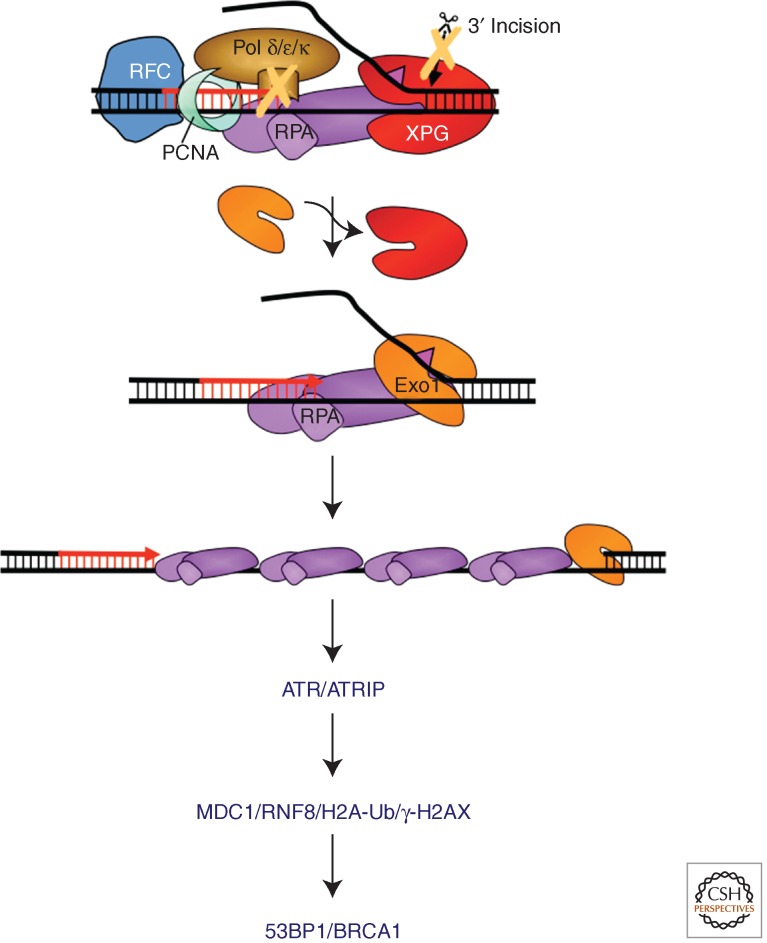Figure 4.
Model for NER-mediated UV-induced DNA-damage signaling. Damage signaling can be triggered during the repair synthesis step of NER if (1) the damage load is too high, (2) repair synthesis is inhibited, and (3) 3′ incision does not occur. In these situations, XPG is replaced with EXO1, which processed the NER intermediate into an ssDNA gap of up to kb in length. RPA covers the ssDNA and binds ATRIP/ATR activating the ATR kinase and triggering a signal cascade that involves MDC1, RNF8, 53BP1, and BRCA1, and leads to the establishment of chromatin marks, including ubiquitination of histones and phosphorylation of γ-H2AX. This process does not share many common features with DSB-induced signaling.

